Take It or Leave It: Instituation, Image, Ideology | February 9, 2014 – May 18, 2014 | http://hammer.ucla.edu
Entering through the museum’s glass door, one thing I was already certain about was that I really liked the black and white graphics on the wall leading to the museum’s stairway. I climbed up the stairs and entered into the large exhibition room. I started to walk around, examining every art piece very attentively with pure delight and amazement, as though I was a tourist who just got off the train, stepping into this charming new town, walking around to discover everything new and exciting.
Lost in my thoughts while looking at a painting, I felt a pair of eyes affixed on me. Looking up, I noticed one of the the guards of the museum watching me as well as watching everyone else . I thought to myself, I have seen this old man here before, guarding exactly in the same room of the museum and in the same very spot. Or have I? Don’t all the museum guards look the same, with the same expressionless faces? We have learned to see them but glance away, not quite noticing them as though they were part of the room’s furniture and fixtures. I walked towards the guard and started talking to the old man in uniform. “Do you know anything about this exhibition?” I asked him. Upon hearing my question, the guard became animated and started to talk. “Oh, yes. I know a little bit,” he replied. I asked him, “Can you tell me what you know?” “Okay,” the guard began. “This exhibition consists of the work of thirty-six different artists, all from the 1970s to 1990s. They created all this art that you can see here – all these paintings, installations, photography, and videos – which are mostly from the 1980s to 1990s. They are all influenced by the time of Reagan, AIDS, feminism, social rights, and and whatever else was happening in those days. Well, that’s about all I know.” “This is just great and helpful,” I thanked him. “Do you have any idea when the museum’s tour will began for this show?” The guard replied, “I’m not quite sure, but I’ll watch for it and let you know. I thanked him. As I was walked away, I thought about how I had never talked to a museum guard before. I turned back. “Can I ask another question? Do you like your job? Do you ever get bored of looking at the same art over and over again everyday?” The guard responded, “Oh, not at all. You know, I am from New York, and when you are from there, you have seen it all and heard it all and learned a bit more than your share, so you are also bound to love art . I love art, and I love history. Really, I like my job and have been doing this for years now.”
Hearing that response, I continued my expedition, my voyage from one piece of art to another, before I was told that the tour of the exhibition had already started. I followed a group of school children and their teacher as the museum’s tour guide led the group. We proceeded past each piece of the art until the guide stopped in front of a small, hip, red, white, and blue candy installation piece representing the American flag. Pointing at the art work, the tour guide continued, “Now we can see a very good example here with this piece. The artist means to make his art touchable and to allow his viewers to get involved with it and to become part of the art. The viewer is allowed to reach out and touch the art and even pick up a piece of candy, unwrap it, and eat it.” She then turned towards the school children and added, “Please help yourself. Go ahead and take a piece of candy.” At that point, after a pause, there were hands extending, and one by one, the students helped themselves to the candies. I waited a while before reaching out and taking one for myself, unwrapping it, and putting it in my mouth. Yes, it is all true. I have touched the art in a museum, and I have also been touched by an intangible: a museum guard conversing with me. There and then, I decided that that would be my day’s miracle.
Take It or Leave It: Institution, Image, Ideology is the first large-scale exhibition to focus on the intersection of two vitally important genres of contemporary art: appropriation (taking and recasting existing images, forms, and styles from mass-media and fine art sources) and institutional critique (scrutinizing and confronting the structures and practices of our social, cultural, and political institutions). The exhibition brings together works by thirty-six American artists who came to prominence between the late 1970s and the early 1990s.
The majority of the works on view are from the 1980s and 1990s, a groundbreaking period that was shaped by the feminist and civil rights movements of the previous decades. Conscious of the profound impact on society of mass media such as television, newspapers, and film, artists examined critical questions of identity and representation via politically and socially engaged practices. This era witnessed a number of significant events that reverberated in the art world: the AIDS crisis; Ronald Reagan’s “trickle-down” economics and the subsequent recession; the fall of the Berlin Wall and the end of the Cold War; among others.
Expanding on the work of earlier conceptual artists, who were committed to exploring the very definition of art, the artists featured in Take It or Leave It believe that art cannot be fully understood or experienced without acknowledging the contexts in which it is produced, viewed, and distributed. They point to the links between art institutions and the other organizations that make up our society, asserting that to separate art from aspects of our daily experience—whether education or medicine, marriage or war, parenting or advertising—is to reinscribe arbitrary and false divisions between art and society, between our aesthetic lives and our everyday lives.
Although Take It or Leave It is a historical show focusing on a period in the recent past, it also includes recent work, arguing for the continued relevance of these artists’ practices and also revealing their sustained commitment to both historically recognizable and emerging strategies of appropriation and institutional critique. The exhibition highlights dynamic practices in notably diverse mediums, including painting, sculpture, installation, photography, video, text, and performance. The works are by turns subtle and aggressive, poetic and didactic, emotional and intellectual. They are as challenging as they are rewarding, as radical as they are rational. Take It or Leave It seeks to revive and participate in the meaningful debates that the artists have fostered over time and to instill a desire for critique, in its many forms, to remain a cornerstone of American art. Read more…
Tags: Art, Art Reviews, Hammer Museum, museum, Reviews, Take It or Leave It
Posted in Art Reviews, Reviews |

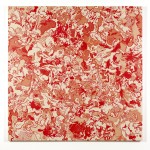
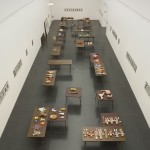
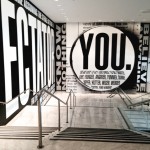
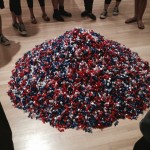


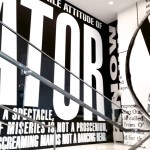
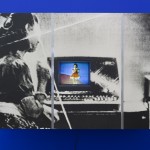
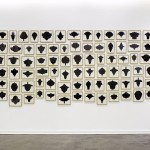

Leave a Reply